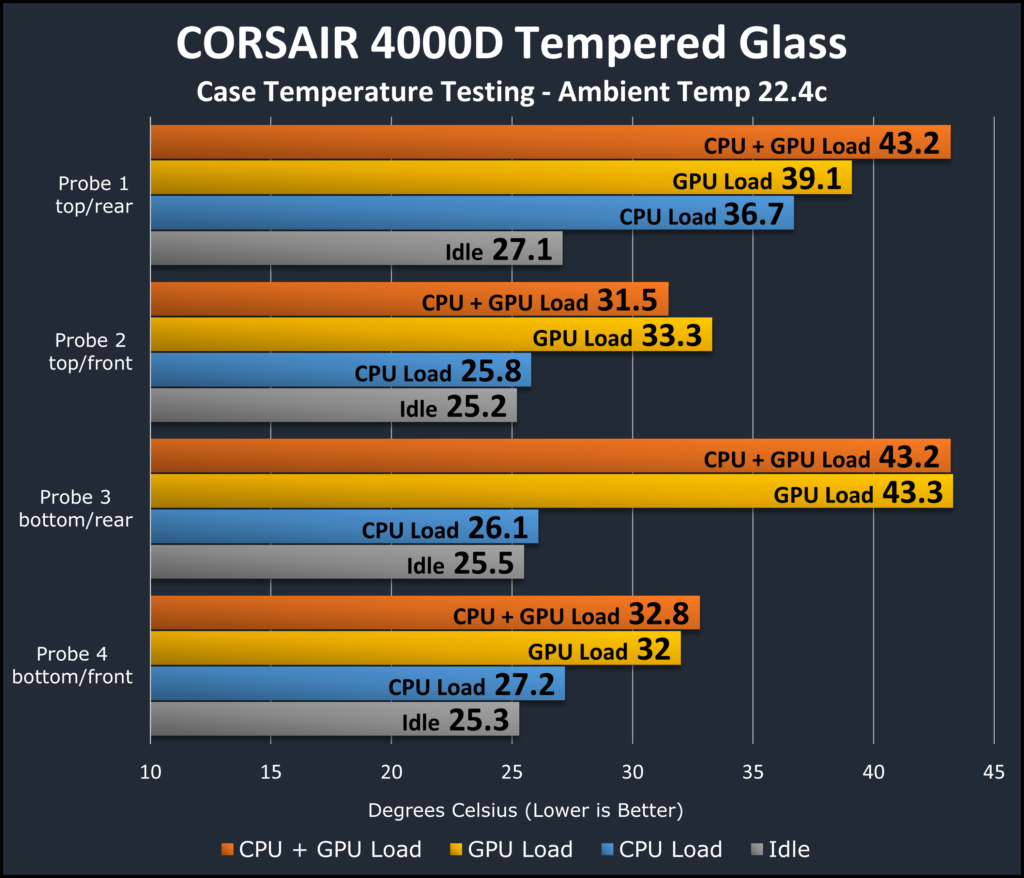Noise Level
The noise level testing is straight forward and consist of three readings. The three readings are a baseline with nothing running, 10 minutes after the system has fully booted into Windows and finally peg the system at 100% on the CPU and GPU and record those readings after 10 minutes.

As we can see there is only a 6.7 dB increase in sound from the system powered off to being at a 100% load with fans a blazing. I would classify this as a mildly quiet case.
Thermal Dissipation Testing
This will be a 4-part test. I will test the system at idle, CPU only, GPU only, and CPU + GPU loads. There are 4 probes I place inside the case. top/rear, top/front, bottom/rear and bottom/front. The top/rear is located directly behind the CPU tower cooler. The bottom/rear is located just below the GPU. The two front probes are at the same level as the rear but located towards the front of the case.

We are starting this test out with an ambient temperature of 22.4C. During idle, the temperatures do not rise that much which we expect.
During the CPU test, we can see the probe 1 increases as it’s sitting right above the CPU, behind the CPU tower cooler. While none of the other probes really increase much. The case does a great job of expelling the CPU only temperatures out.
Looking at the GPU only test things get a bit more interesting as the temperature for probe 3, as we would expect, rises with the increased GPU load. However, probe 1, which is located at the CPU, increases more than the CPU only load test. This could be due to the fact that even though the temperature around the CPU cooler increases, the CPU itself does not increase in temperature. Therefore, the CPU cooler fan does not increase in speed helps expel that hot air out the back.
During the full system load, we can see the temperatures rise across the board, but not much more than just the GPU temperature. This helps further illustrate that the CPU tower cooler is helping expel some of the hot air out of the rear of the case.
